With winter fast approaching, we need to do more than just get our house in order and ready for cold weather; we need to get our cars in order too.
Wintertime is hard on cars and even harder on drivers who get stranded in their cars. If we aren’t ready for dealing with a winter blizzard, we are putting ourselves and our families at grave risk. Part of the problem we face is that winter storms can take us by surprise. Weather forecasters are notoriously inaccurate in their prognostications. This is even worse in some parts of the country, where mountains or large bodies of water can make sudden differences in the weather, causing storms to appear out of what seems like nowhere or causing storms which are much larger than originally expected.
World’s Smallest Battery Will Power Your House For More Than 2 Days!
Being caught in a car, in a blizzard, can be extremely dangerous, especially if we’re not ready for it. But at the same time, a few basic precautions can make it possible to survive, even if you drive off the road into a snow bank. It might not be comfortable, but being uncomfortable is preferable to being dead.
Start with Your Car
It’s one thing to be caught in a blizzard; sometimes you might not be able to do anything about. But it’s another thing to be caught in a broken-down car, in the middle of winter. On top of dealing with being broken down, you’ll end up having to listen to yourself tell yourself that it’s all your fault; and you’ll probably say that over and over again. Justly so.
The reality is that your car is much more likely to break down in winter weather, than it is in summer weather, just like it is more likely to slide off the road, hitting a patch of ice. With that in mind, it only makes sense to ensure that we’ve done everything we can to ensure that our cars are ready for winter and aren’t going to have problems.
This means ensuring that our cars are in tip-top mechanical shape.
Often, it’s the little things, not the big ones, which cause us problems in the winter. Things like a hose popping or a battery dying. Most of these items are actually considered to be regular maintenance items, which means that checking them should be a regular part of our vehicle maintenance.
Yet few people today actually bother with vehicle maintenance.
• Tires – Good tires are an important part of maintaining control of your vehicle on slippery roads. Few people bother anymore with buying winter snow tires, unless it’s the big knobby ones on a 4×4 vehicle. Instead they opt for all-season tires and leave them on their cars. But these are only good if they have plenty of tread on them. If they’re getting close to the wear mark, it’s a good idea to replace them before the first snow falls.
• Hoses – Car cooling systems have a hard time dealing with cold weather, especially in the far north, where it’s a challenge to keep engines from freezing. Hoses which are nearing the end of their life will often soften near the ends, forming somewhat of a bubble. If this is the case, better to change it while the weather is still nice.
• Engine heater – Speaking of freezing engines, if you live far enough north where that is an issue, then check your engine heater before the really cold weather hits. Just because it worked in the spring, doesn’t mean it works now.
• Belts – Rubber belts, like hoses are affected by engine chemicals and changes in weather. If your belts are already starting to show signs of cracking, the cracks will get bigger during cold freezes. Worse than that, cold weather can affect the bearing lubricants in the idler and tensioner pulleys. If they show any slop at all, best to replace them.
• Anti-freeze – Check your anti-freeze to ensure that you have a 50/50 mix, especially if you had to add any water during the year. Add 100% anti-freeze to bring the coolant to the right level of protection or refill the entire system with a 50/50 mix.
• Windshield wipers – Your windshield wipers will get a workout, cleaning snow and ice off your windshield. If there are any cracks in the rubber at all, they won’t survive. Replacing them before winter hits should be on everyone’s maintenance list.
• Windshield washer fluid – While you’re checking your windshield wipers, check the washer fluid and the function of the pump as well. You’ll use more washer fluid on those slushy days than any other time of the year.
• Battery – One of the most common maintenance problems in cold weather is batteries dying. Your car’s battery should have the date of purchase marked on it. If it is nearing the end of its guaranteed life, you may as well replace it, as it won’t make it through the winter.
• Alternator – While checking your battery, take a look at your alternator as well. This is what charges the battery, and is therefore essential. If yours is old, there’s a chance that it will fail during the winter.
• Battery cables – The battery cables are unlikely to go bad, but you want to make sure that the connection between them and the battery is cleaned and protected from corrosion. Starting an engine in cold weather requires more current than in warm weather, so you might have trouble starting your engine if your cable connections are dirty.
As you can see, none of these are big items, but they’re all important for your car to be ready for winter. But that’s not all; you need an emergency kit in your car, to take care of any problems that your car may have. You’ve got to be ready not only to deal with mechanical problems with your car, but with problems the weather may cause for your car.
Car Emergency Kit
You can actually buy car emergency kits, some of which are actually pretty good. But I doubt you’ll find one which has everything in this list. So, if you’re going to buy one, do so with the idea that you’ll add to it, as you need.
• Shovel – If you really get stuck, you might just have to dig your car out. A small shovel, like a camp shovel or entrenching tool can make a world of difference here.
• Chains or traction straps – If you live somewhere which allows you to use chains, I’d keep some in the car. I don’t personally like the cable ones, as they break very easily if you hit a dry patch of road. I’d go for the real chain ones. Better yet, the strap on plastic ones, which are like big wire ties with bumps on them. if you hit a dry spot and they break, it’s no big loss and it won’t damage your car.
• Sand – I used to always keep a couple of bags of sand in my trunk or the bed of my truck, both to improve traction and to help me on the ice. While sand in the trunk won’t help a front-wheel-drive car have more traction, it’s still useful for giving you some grip on the ice.
• Basic tools – Even if you don’t know how to use them, you should have a tool kit in your car. Someone might come along who can help you out, who doesn’t have tools, but has the knowledge. A socket set, wrenches, screwdrivers and pliers will allow for most simple repairs.
• Tow strap – Some people prefer tow chains, but I prefer straps; they’re more forgiving. This is probably one of the most important items on this list, as it can be used by someone else, trying to pull you out if you are stuck.
• Spare battery – The new lithium-ion battery jumpstarters are ideal for keeping in your car in the wintertime. They provide you with a means of getting your car going, if your battery goes dead. The alternator will provide power once you get the engine running, even if your battery is bad.
We’re not talking a lot of money here, to put these items together, or even a lot of space in your trunk. But this kit will take care of a lot of problems your car might encounter.
Winter Car Survival Kit
Your biggest need isn’t the kit I just mentioned, to take care of your car, but rather a winter survival kit to take care of yourself. If your car’s engine is still running and you have enough fuel, you can start it every 15 minutes or so to warm the car up at least a little. But you have to be ready in case you can’t do that.
These items will help:
• Emergency space blankets & Duct tape – Your car doesn’t have much insulation in it to hold in your body heat and the heat from the car’s heater. But if you line the interior surfaces of the car with space blankets, you’ll be able to reflect a lot of that heat back into the car. It will take 3 blankets to cover roof, doors, windshield and make a curtain behind the front seat. If you need to enclose the entire passenger compartment, you’ll need 5. Use duct tape to hold them in place.
• Scissors – For cutting the space blankets. A knife will work too, but it’s hard to cut them neatly with a knife.
• Large candles & matches (not a lighter) – To generate heat. Candles might not put off a lot of heat, but you’ll be surprised how much of a difference it will make. Use matches, not a butane lighter, because butane lighters don’t work well in the cold.
• Plastic bags – To use as an emergency toilet, so you don’t have to leave the car. It might not be pretty or modest, but you’ll be better off staying inside.
• High-energy food bars – Your body will need a lot of calories to produce heat. While it can get those calories from fat, that’s a slow process. Better to be able to feed your body the energy it needs.
• Water – The trick here is keeping it from freezing. Keep some sort of metal cup as well, so that you can warm the water over your candles, before drinking it.
• Rope – If you have to go out of the car for any reason, even just to get to the trunk or clear the tailpipe, tie one end of the rope to you and the other to the car (steering wheel, for example). That way, if you can’t see to find your way back, you can pull yourself along the rope. People have gotten lost in a snowstorm, going no farther than what I mentioned.
• Blankets – Any old blanket will do. Keeping a few in the car will help keep the wife and kids happy when driving in the cold anyway. If you get stuck, they’ll be lifesavers.
• Gloves, hats and scarves – I don’t always wear these, so I keep a set in the car. You lose body heat through the top of your head, faster than anywhere else.
• Powerful flashlight – I mean really powerful; one of the better tactical lights. You can use it to signal cars going down the road.
• Phone charger – Your greatest chance of rescue is when you are able to call for help. But somehow, phone batteries have this tendency to go dead, right when we really need them. Keeping a charger in your car just makes sense.
Your chances of survival in these sorts of situations are always better if you stay with the car.
Law enforcement officers and snow plow operators going down the road will be looking for any cars that have driven off the edge. Your car is much more visible than you are. Besides, it provides you with shelter, which you will sorely need.
In a real emergency, you can burn your spare tire. Just realize that it will produce a lot of thick, black smoke, along with the heat it produces. So be sure to burn it on the downwind side of the car, opening a door and burning it on the ground there. Be careful that the flames don’t hit the car, so that you don’t start burning anything you don’t want to.


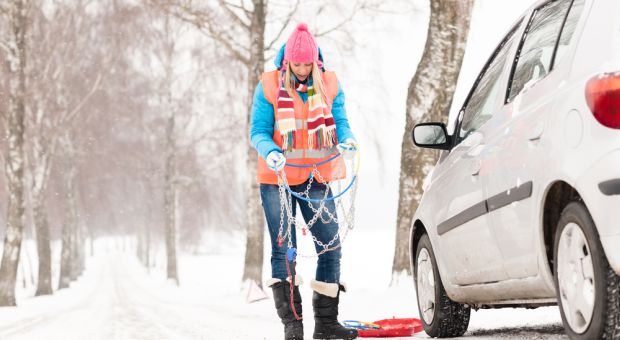
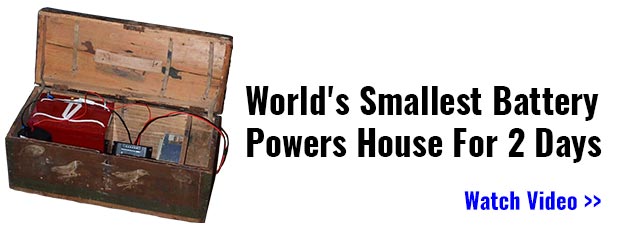
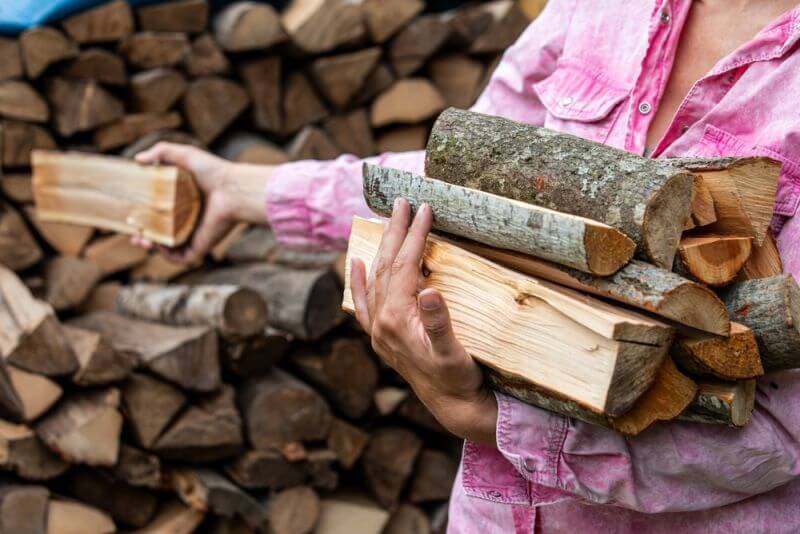
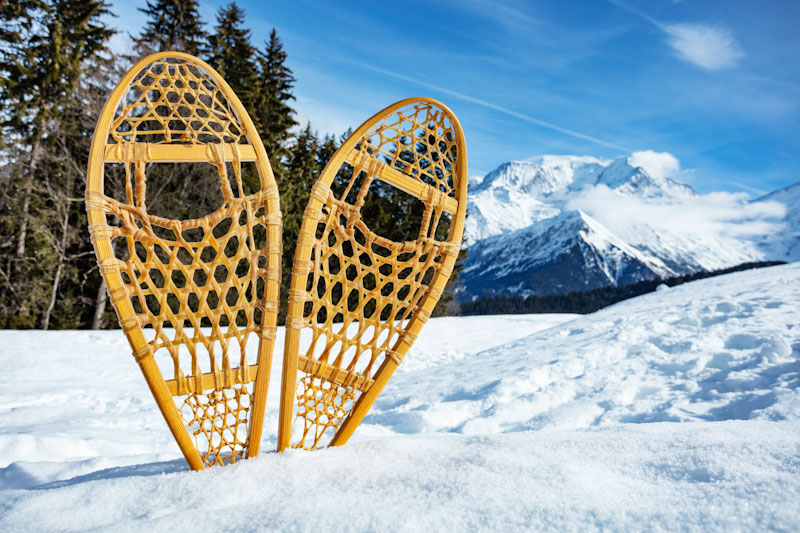
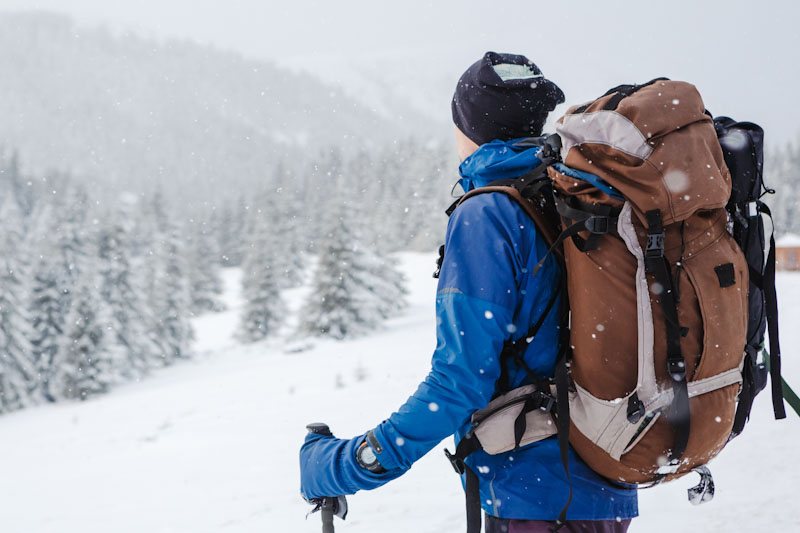
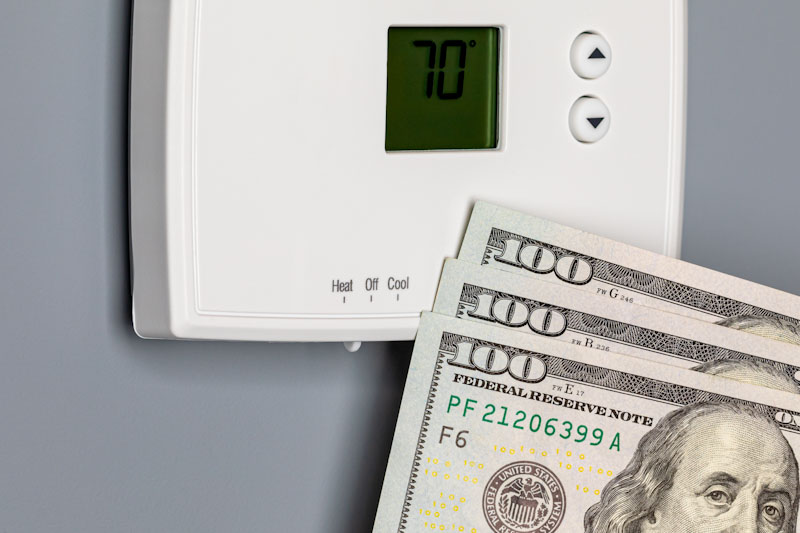

Bill in Idaho | October 9, 2018
|
Good Information in this Article, Bill. You covered All the Essentials pretty well. Thanks.
William | October 10, 2018
|
I lived in MT and in the winter we carried a 3 lb coffee can stuffed with 2 compressed rolls of toilet paper and several books of matches. Taped to the outside of the coffee can were two bottles of rubbing or isopropyl alcohol. Don’t know if Vodka or whiskey would work. I doubt beer would work – too much water. I would suspect Everclear would:-)
In an emergency you remove one roll of toilet paper leaving one in the inside. Then you pour an entire bottle of rubbing alcohol. The paper absorbs the alcohol and acts like a wick. Obviously keep the heater from burning anyone or anything, making a bad situation much worse. You can heat you hands and feet as well as the interior of the car. You can make hot coffee or hot coco if you include a meal cup and the fixings.
I was told that it won’t liberate carbon monoxide which can kill you with out warning.
I know of five brothers traveling in a snow storm till they were too tired to drive so they pulled over but left the car running. The car was covered with several feet of snow during the night which apparently kept the carbon monoxide from escaping. In the morning 4 of the brothers were dead from carbon monoxide poisoning
The ingredients are common, cheap, readily available and take up very little space.
You can get a medium size duffle bag say at REI / other and put a spare sleeping bag plus the stuff mentioned in this article. In the winter if you change vehicles it is easy to throw the bag into whichever vehicle you will be traveling in.
It can actually be fun to put these bags together and to give to your family and friends
The most important ingredient is UNCOMMON sense. Bring it with you -always:-)
MikeyW | November 18, 2019
|
The only way this setup would NOT emit carbon monoxide is if you can ensure COMPLETE combustion, which I find highly unlikely. Can will get VERY hot and will melt and/or ignite floor mats or whatever it is sitting on. This setup might be a lifesaver in extreme situations, but adequate ventilation is needed (crack two windows at least an inch or two) and put can on something that will not burn or conduct heat, like a mound of sand. And don’t fall asleep!